UV Photography: Make Portraits Glow with Black Light
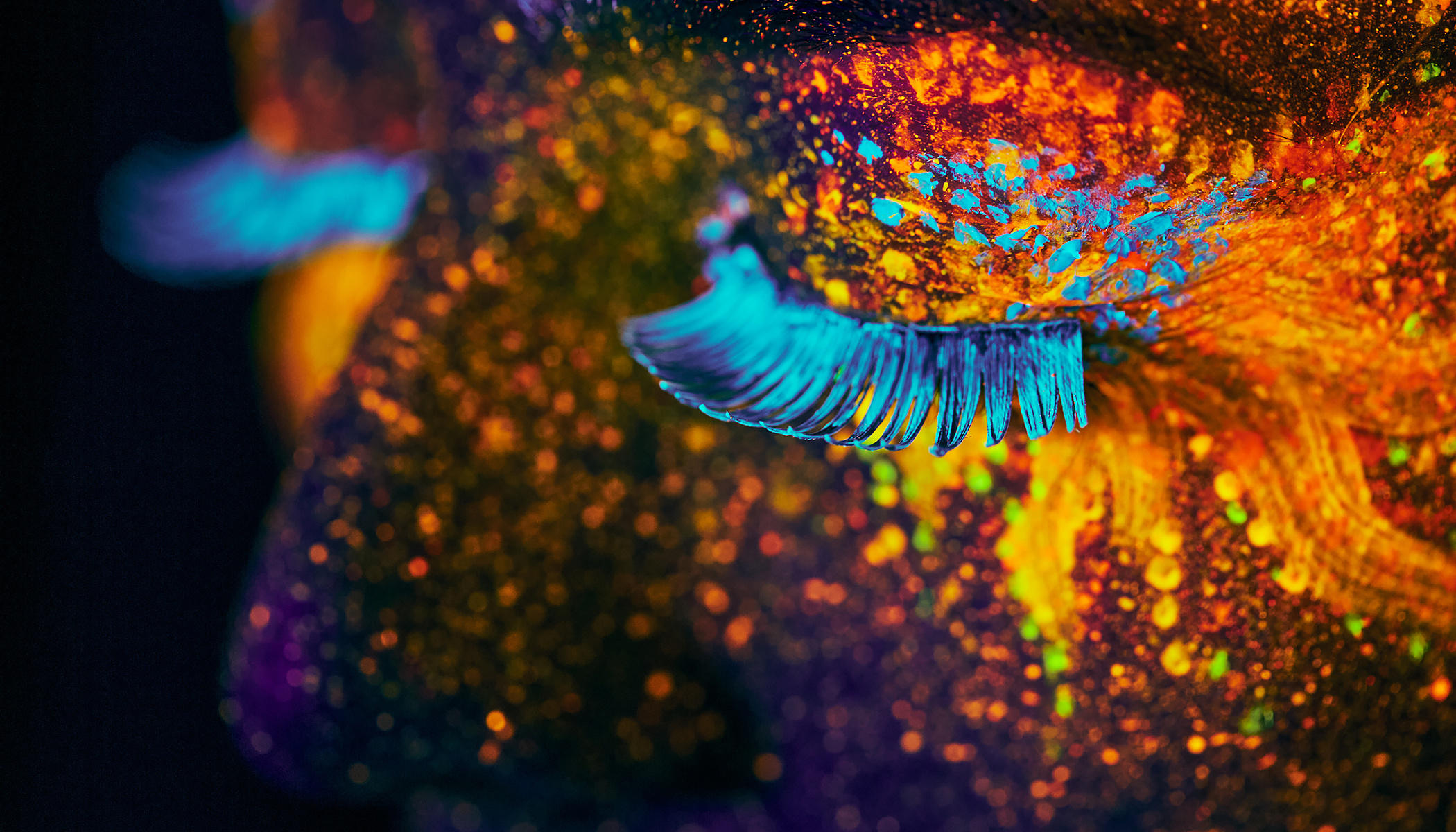
UV, or black light, sits at the far end of the visible light spectrum. In the dark, it makes objects and materials that reflect this part of the spectrum glow. Whites react the strongest, but they’re far from the only ones. UV light is used in many fields, so why not use it for photography and create striking portraits?
In this article, we discuss:
- How UV (black) light works and why it’s perfect for creative portraits
- The types of UV light sources and which are suitable for photography
- How to work with UV-reactive paint, powder, clothing, and props
- How to combine UV light with standard lighting to make your portrait stand out
- How to use long exposures, colored lights, and motion
- Camera settings that work well for UV photography without losing detail
- What to watch out for, including UV lens filters
Black light behaves differently. If the UV source isn’t in the shot, it’s almost invisible, apart from a subtle blue tint. Because of that, you don’t have to worry much about traditional lighting setups. One UV source is enough, placed in front of the subject or slightly above them. Anything that reflects UV light appears in your photo.
Which UV light to choose
Several types of light emit UV light: lightbulbs, fluorescent tubes, spotlights, flashlights, and even laser pointers. Each works for different situations. For nightclub or stage lighting, it’s worth investing in a powerful spotlight. UV bulbs are weak and the least suitable for photography. For light painting, both flashlights and laser pointers work well.
For studio shoots, fluorescent UV tubes are the most practical. They’re inexpensive (usually around US$50), and if you need more output, choose a longer tube. You can also make your own basic UV light. Just buy some low-cost UV tape and attach it evenly to a rod or cardboard panel.
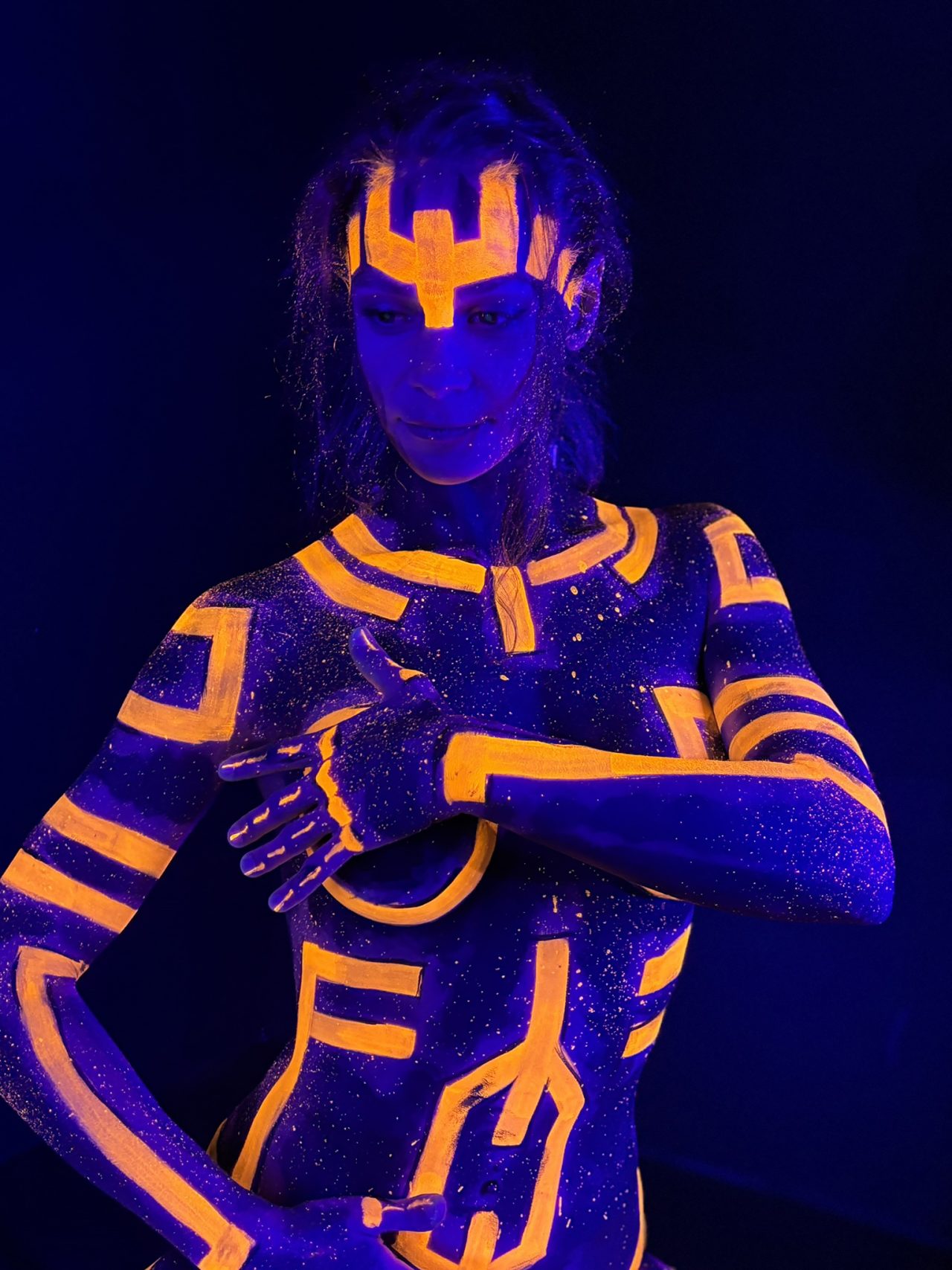
Body painting by @sigi_dwn
Model @sariperfoms
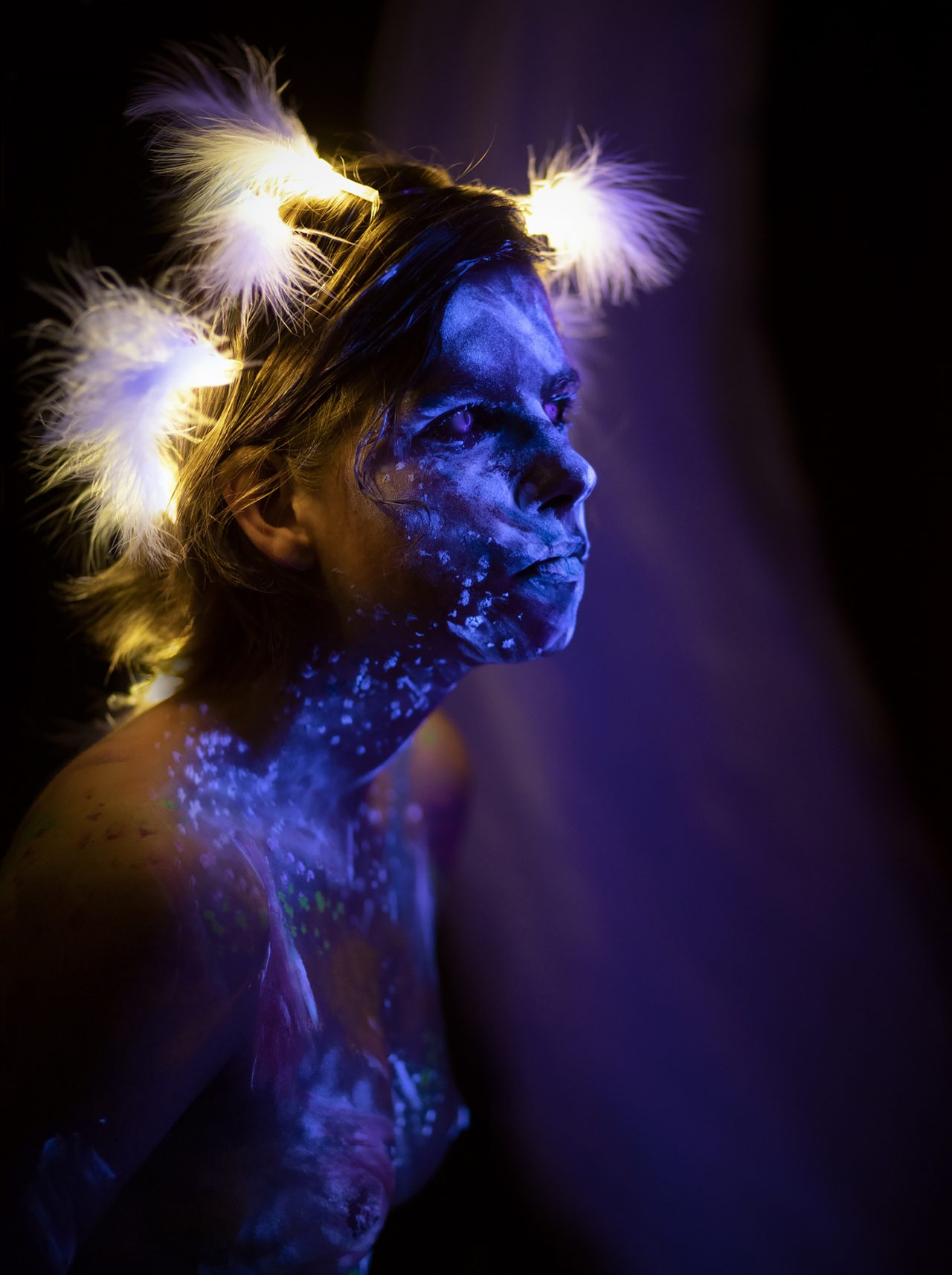
Body painting by @magdalena_kastnerova
Model @dominika_dufkova
Emphasize Color
Many objects glow under UV light. White clothing reacts strongly, and party-supply shops sell plenty of UV-reactive items: wigs, masks, colored contact lenses, powders, and paints. Color is an advantage. It brings attention exactly where you want it. This can be bold makeup or body paint, without the painted areas visible.
If you’re pairing body paint with lingerie, make sure the lingerie doesn’t glow more strongly than the paint. Avoid patterned pieces unless you’re shooting the lingerie itself and want it to be the focus. The painted designs can be structured—long lines, geometric shapes—or more free-form like floral patterns, ornamental patterns, or irregular colored spots.

Painted by @barbarossarufus
Model @malej_velkej_hydrolis
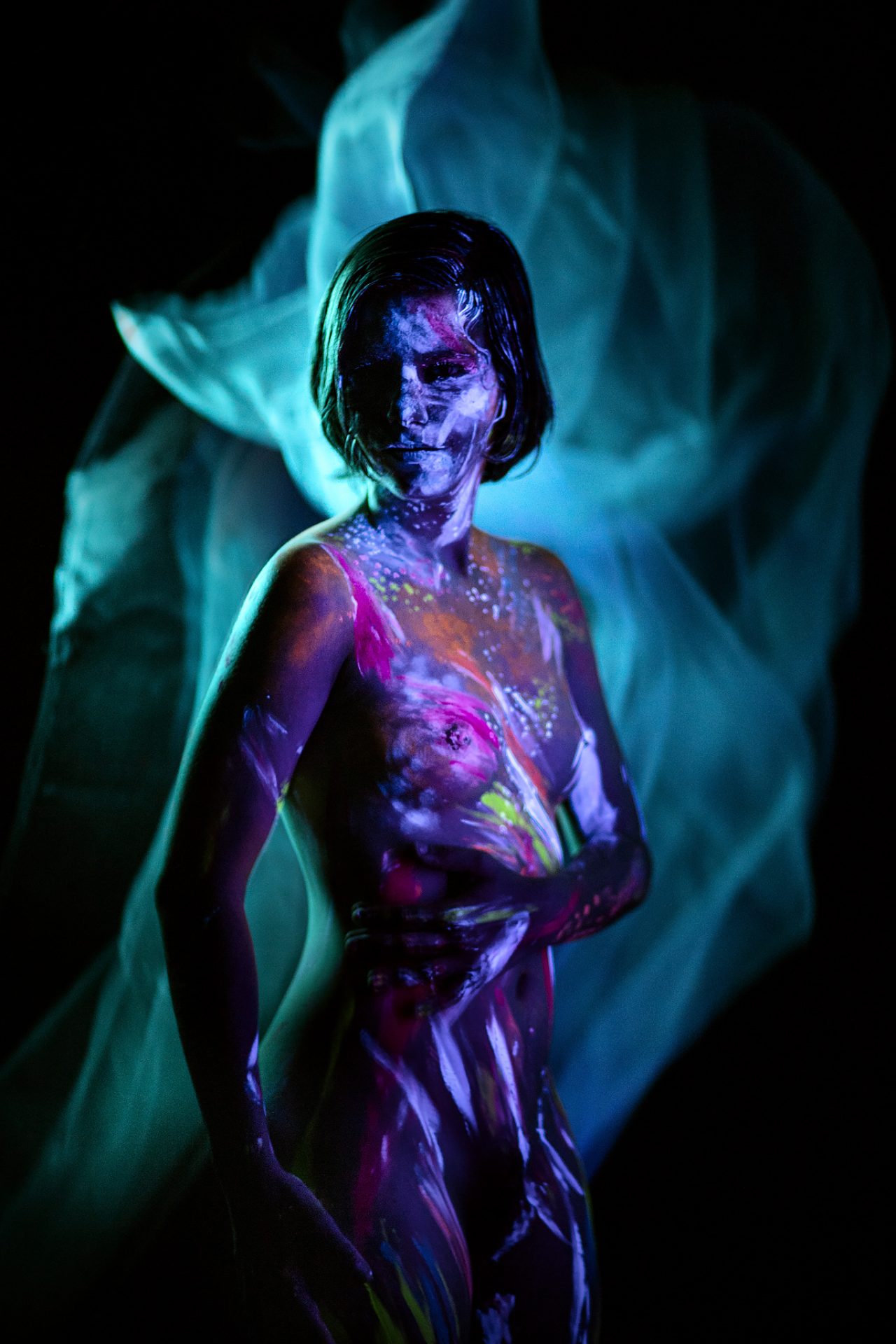
Painted by @magdalena_kastnerova
Model @dominika_dufkova
Bringing out your subject
The UV effect is mesmerizing, but for the portrait to truly pop, you also need standard lighting. Besides glowing colors, the subject should also stand out. Use flash and position it as you would for a regular portrait session . Keep the flash power moderate, since the goal is to shape the face and body, not add neon effects.
Another option is continuous light combined with a longer shutter speed. Since I focus on light painting, this is usually my go-to. But it’s more demanding for the model. They have to remain completely still for several seconds.

Painted by @klarii.spin
Model @lilydevilain
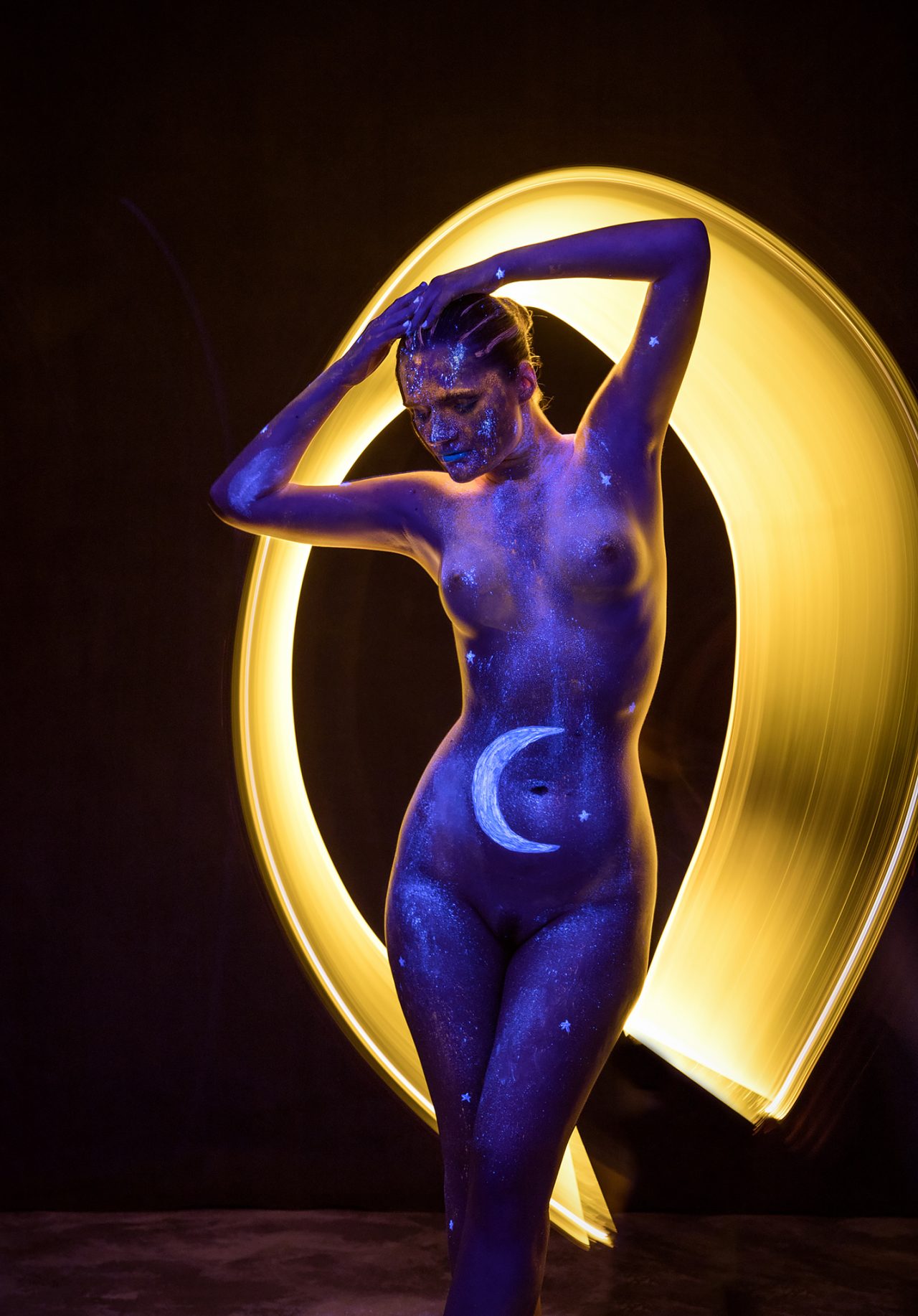
Painted by @klarii.spin
Model @tereziamodel
Camera settings for UV light
UV light makes up only a small part of the light spectrum, so it’s much weaker than regular white light sources. It is also continuous. Don’t expect to be able to freeze fast motion as you would with flash. I recommend using a tripod and choosing more stable poses for the model that allow you to shoot with shutter speeds of around 1/100s. You can raise ISO, but keep it sensible so you don’t introduce noisy shadows and lose detail.
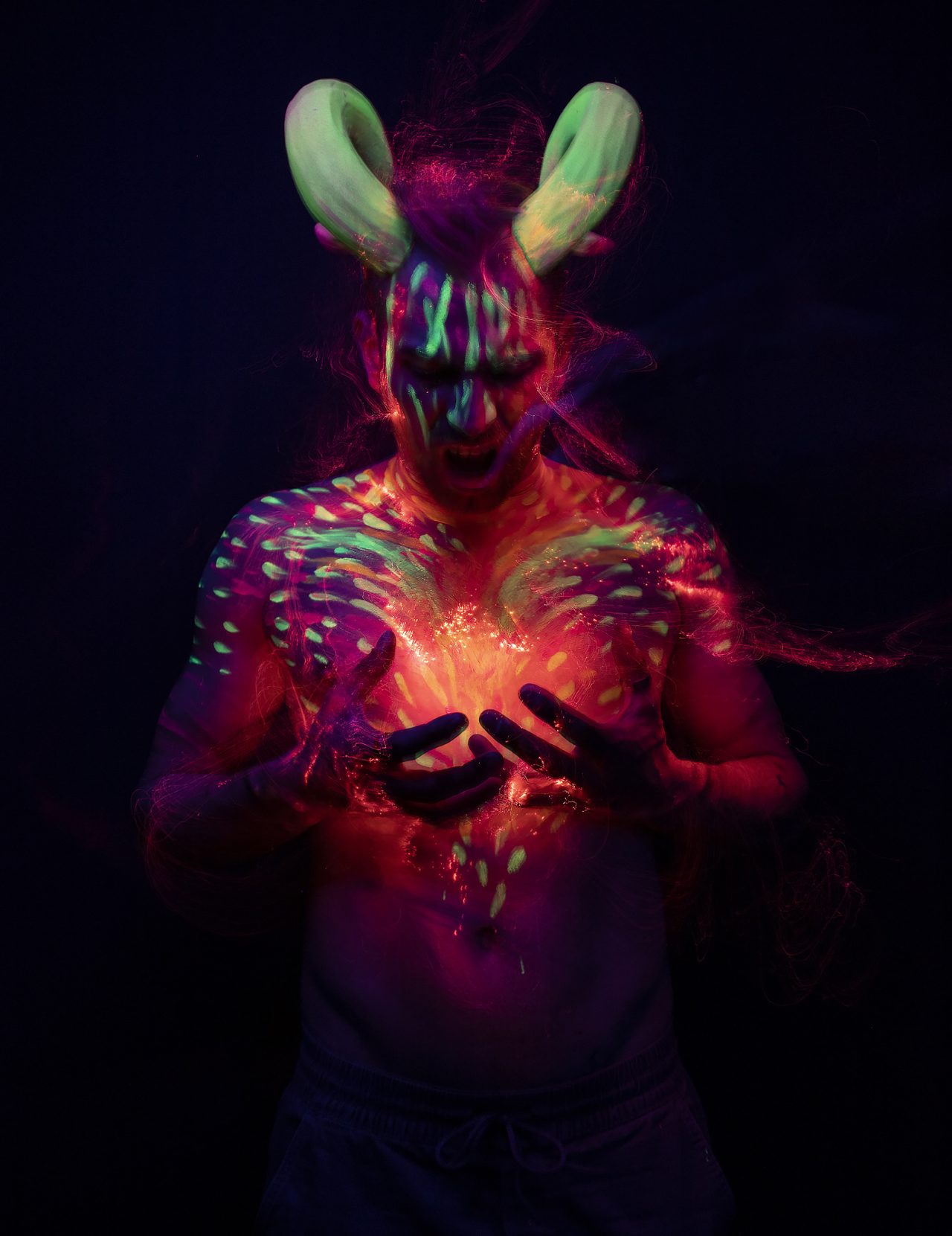
Painted by @barbarossarufus
Model @sigi_dwn

Many photographers use UV filters to protect their lenses. They’re clear, don’t affect exposure, and protect the front element if you drop your camera. However, when shooting with UV light, remove the filter. It blocks the very part of the spectrum you want to capture.
FAQs
Is UV photography safe? Yes, standard UV lamps and bulbs used for decorative purposes are safe. Do not use strong UV-C or disinfection-grade lamps.
Which colors glow the most under UV light? White, neon colors, and any UV-reactive paints or powders produce the strongest glow.
Should you combine UV light with regular lighting? Yes. While the UV glow is striking, adding conventional lighting helps shape the face so the portrait doesn’t appear flat.